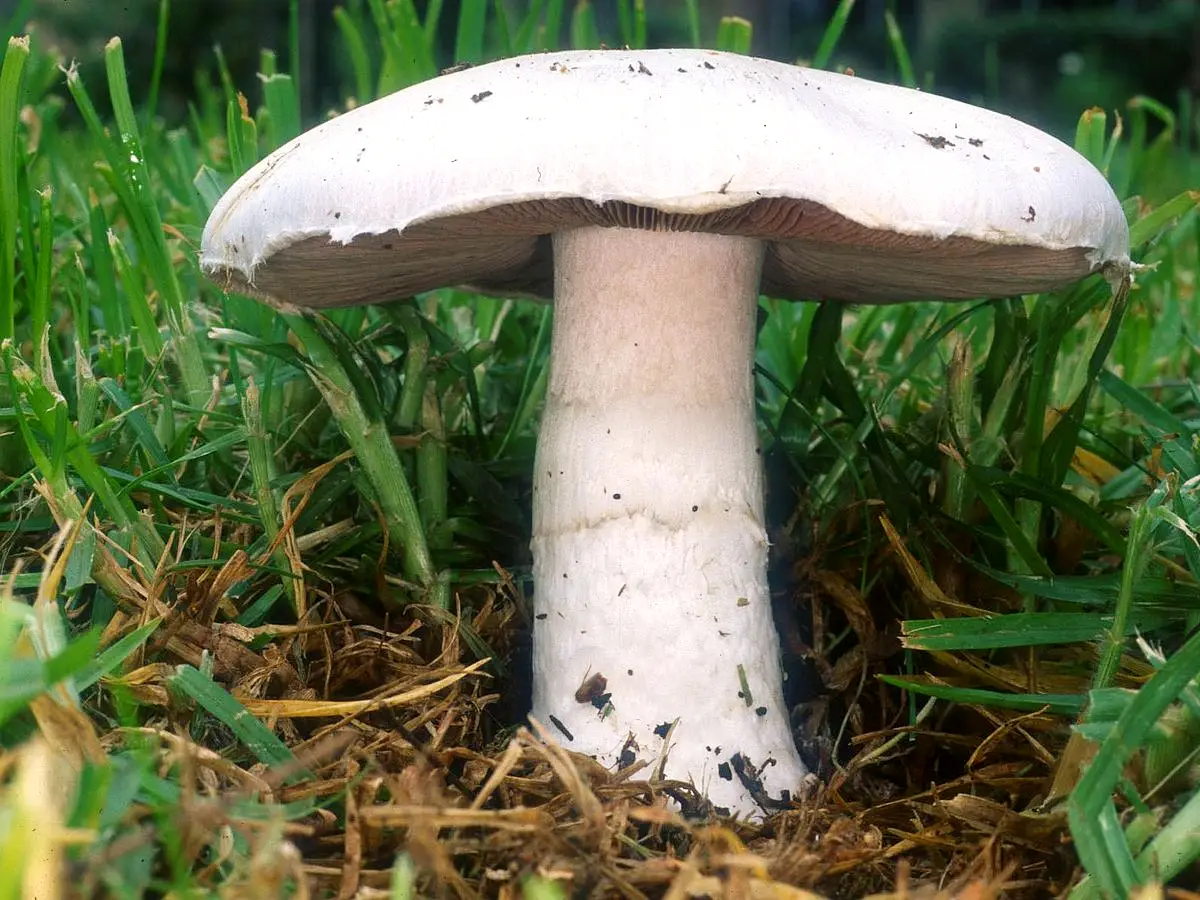Contents
CLASSIFICATION OF AGARICUS (MUSHROOM)
Kingdom :- Mycota
Division :- Eumycota
Sub-division :- Basidiomycotina
Class :- Hymenomycetes
Sub-Class :- Holobasidiomycetidae
Order :- Agaricales
Family :- Agaricaceae
Genus :- Agaricus
The Agaricus (mushroom) (vern. kukarmutta, saap ki chatri) is very common in humus soil, dung, rotten logs of wood and other similar decaying organic substances during the rainy season. Precaution. Stay away from beautifully coloured mushrooms for they are often poisonous.
VEGETATIVE STRUCTURE
- The mycelium is underground and consists of much branched hyphae, anastomosing at their points of contact, forming a network in the substratum.
- Hyphae are septate, dikaryotic with granular protoplasm and prominent oil globules.
- The aerial portion constitutes the fruiting body. (Fruiting body is formed only by the dikaryotic mycelium).
STUDY OF BUTTON STAGE
- This is a developmental stage of the basidiocarp.
- It is formed above the ground in the form of a small, globose body. 3. In a longitudinal cut, it reveals a small stipe surmounted by the pileus.
- In between pileus and stipe, there is a constriction.
- At the level of this constriction are seen two lamellar cavities or chambers, one on either side.
- The lamellar cavities or chambers have small lamellae or gills.
- The edge of the pileus is connected to the stipe by a thin sheet of tissue-the veil or velum.
STUDY OF BASIDIOCARP, GILLS, BASIDIA AND BASIDIOSPORES
- The mature basidiocarp consists of a stalk or the stipe, having an expanded pileus at its top.
- With the growth of the basidiocarp, the veil or velum ruptures and in mature basidiocarp it remains in the form of a ring (annulus) on the stipe, just below the pileus.
- The upper surface of pileus is flesh coloured and tough.
- The pileus, on the underside, bears many lamellae or gills which hang down vertically and extend almost radially from stipe to the margin of the pileus.
- The gill in transverse section exhibits a trama, a sub-hymenium and a hymenium.
- The trama forms a central core of elongated sterile hyphae.
- The hyphal cells of trama curve outwards on either side of the gill forming a more or less compact tissue of cells, the sub-hymenium.
- Finally the hyphae terminate in elongated, club shaped cells, forming a superficial layer of the gill, known as the hymenium.
- The hymenium at maturity, consists of the fertile cells, the basidia, intermingled with the sterile cells, the paraphyses. (The paraphyses are undeveloped basidia).
- Each basidium is a club-shaped structure, bearing at its top generally four but sometimes two basidiospores, on short slender stalks known as sterigmata.
- Each basidiospore is oval in shape and uninucleate.
- On germination, it produces the new (monokaryotic) mycelium.
IDENTIFICATION
- KINGDOM – Mycota
- Chlorophyll absent
- Reserve food glycogen
- Cell wall of fungal cellulose.
- DIVISION – Eumycota
- A definite cell wall present.
- SUB-DIVISION:- Basidiomycotina
- Mycelium septate.
- Characteistic reproductive body, basidium.
- Basidiospores usually four, produced exogenously.
- CLASS :- Hymenomycetes
- Basidiocarps usually well developed,
- Mostly saprobic.
- SUB-CLASS :- Holobasidiomycetidae
- Basidia club-shaped and non septate.
- ORDER – Agaricales
- Basidia borne on lamellae,
- Basidiocarp soft and putrescent.
- FAMILY – Agaricaceae
- Basidiocarp fleshy.
- Gills narrow in section.
- GENUS – Agaricus
- Pileus centrally stipitate.
- Annulus typically present.
- Gills free, stipe readily separating from pileus.
REFERENCES
- https://en.wikipedia.org/wiki/Agaricus
- https://depositphotos.com/stock-photos/agaricus-campestris.html


Leave a Reply